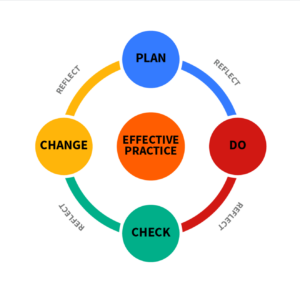 In a recent op-ed appearing in The Hill, ThinkCerca’s founder and CEO, Eileen Murphy Buckley, describes the challenges she faced as a novice English teacher working at Whitney M. Young Magnet High School, one of Illinois’ best high schools and Michelle Obama’s alma mater. Like many first-year teachers, she struggled with classroom management, planning relevant and engaging instruction, and mastery of her content area. She received sage advice from veteran colleagues, but she “confesses” that her strongest supports as an inexperienced teacher were the instructional materials she used in the classroom.
In a recent op-ed appearing in The Hill, ThinkCerca’s founder and CEO, Eileen Murphy Buckley, describes the challenges she faced as a novice English teacher working at Whitney M. Young Magnet High School, one of Illinois’ best high schools and Michelle Obama’s alma mater. Like many first-year teachers, she struggled with classroom management, planning relevant and engaging instruction, and mastery of her content area. She received sage advice from veteran colleagues, but she “confesses” that her strongest supports as an inexperienced teacher were the instructional materials she used in the classroom.
She writes:
So, there is my confession after all these years, but I make it to say that the products we use in schools matter. The quality of those resources matter so very much because they are what empower students, regardless of which teacher they end up with. The materials shape teachers and teacher practice, and they shape the teachers they raise through years of side by side work.
These products must answer to students and teachers as well as buyers — the admins and school boards who are the stewards of our future, our culture, our democracy. Products have material impact on the lives of our children and grandchildren — who will be caring for us and our country in the very near future.
Simply put, reading materials impact the quality of teaching in much more significant ways than you might know.
At Learning List, we understand the importance of high quality materials. We recognize that instructional materials influence how teachers teach as well as how and what students learn. And this understanding shapes how we review products.
Our editorial reviews examine the supports each material does or does not provide for teachers. Our reviewers explain whether teacher resources include background in content and pedagogy; provide pacing information, lesson plans, and guidance in differentiating instruction; and offer professional development opportunities and professional communities that facilitate collaboration and sharing with other teachers who use the same product. Our reviewers note when they feel a product is particularly appropriate for novice teachers. Such products include comprehensive discussions of the required content knowledge and pedagogy, and offer detailed, often scripted, lesson plans to support instruction. [Read more…]
Read more


 Educators and publishers often use the terms “standards,” “curriculum” and/or “instructional materials” interchangeably. Moreover, many educators consider their instructional materials to be their curriculum. However, each of these terms represents a distinct component of an educational program. In the sections that follow, we provide explanations of each of these terms to differentiate their meanings in the context of PreK-12 education.
Educators and publishers often use the terms “standards,” “curriculum” and/or “instructional materials” interchangeably. Moreover, many educators consider their instructional materials to be their curriculum. However, each of these terms represents a distinct component of an educational program. In the sections that follow, we provide explanations of each of these terms to differentiate their meanings in the context of PreK-12 education.
 In a recent
In a recent